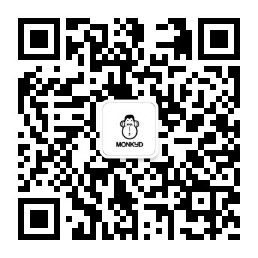剖析AngularJS作用域
2016-08-15 00:31 猴子猿 阅读(1969) 评论(3) 编辑 收藏 举报| 一、概要 |
在AngularJS中,子作用域(child scope)基本上都要继承自父作用域(parent scope)。
但,事无绝对,也有特例,那就是指令中scope设置项为对象时,即scope:{…},这将会让指令创建一个并不继承自父作用域的子作用域,我们称之为隔离作用域(isolated scope)。
指令中的scope一共可以有三个值,下面我们再来温习下:
|
指令之scope |
|
|
scope: false |
默认值,指令不会新建一个作用域,使用父级作用域。 |
|
scope: true |
指令会创建一个新的子作用域,原型继承于父级作用域。 |
|
scope: {…} |
指令会新建一个隔离作用域,不会原型继承父作用域。 |
那么,理解AngularJS中作用域继承有什么用呢?
原因之一就是,有利于我们使用“双向绑定”(也就是在form表单元素中绑定ng-model),例如,在初学AngularJS时,我们常会遇到“双向绑定”不起作用的时候,如下:
<!DOCTYPE html> <head> <meta charset="utf-8"/> <script src="angular.js"></script> </head> <body ng-app="myApp"> parent:<input type="text" ng-model="name"/> <div ng-controller="TestCtrl"> child: <input type="text" ng-model="name"/> </div> <script> var app = angular.module('myApp', []); app.controller('TestCtrl', function(){}); </script> </body> </html>
执行上述代码,结果如下:

其实AngularJS的作用域继承与JavaScript的原型继承是一样的逻辑,固,如果想要上述代码实现双向绑定,我们可以利用ng-model绑定对象属性,来达到目的,如下:
<!DOCTYPE html> <head> <meta charset="utf-8"/> <script src="angular.js"></script> </head> <body ng-app="myApp"> parent:<input type="text" ng-model="obj.name"/> <div ng-controller="TestCtrl"> child: <input type="text" ng-model="obj.name"/> </div> <script> var app = angular.module('myApp', []); app.run(function($rootScope){ $rootScope.obj = {}; }); app.controller('TestCtrl', function(){}); </script> </body> </html>
执行上述代码,结果如下:

该篇博客原文地址:http://www.cnblogs.com/giggle/p/5769047.html
| 二、JavaScript原型继承 |
上面已经提到了AngularJS的作用域继承与JavaScript的原型继承是一样儿一样儿的,所以,我们首先来初步温习下JavaScript的原型继承。
假设,我们有父作用域(ParentScope),且其中包含了属性aString、aNumber、anArray、anObject 以及aFunction。
好了,如果现在有一子作用域(ChildScope)继承于这个父作用域(ParentScope),如下所示:

当我们通过ChildScope想访问一个属性时,JavaScript内部是如何为我们查找的呢?
答案:
首先JavaScript会第一时间在当前作用域(如这里的ChildScope)中查找是否有这一属性,如果在当前作用域中没有找到,
那么JavaScript就会沿着原型这条链(如这里的:ChildScope-->ParentScope-->RootScope),一直找下去,倘若在某一父作用域中找到,就返回这个属性值并停止原型链查找;
倘若一直找到根作用域(如这里的RootScope)都没有找到,则返undefined。
故而,下面这些表达式,结果都为true:
childScope.aString === 'parent string' //true childScope.anArray[1] === 20 //true childScope.anObject.property1 === 'parent prop1' //true childScope.aFunction() === 'parent output' //true
好了,假如,我们这么做呢:
childScope.aString = 'child string'
那么只会在childScope中新建一个值为’child string’的aString属性。在这之后,倘若我们还想通过childScope访问parentScope中aString属性时,就束手无策了。
因为childScope已经有了一个aString属性。理解这一点是非常重要的,在我们讨论ng-repeat 和ng-include之前。

接下来,我们再这么做呢:
childScope.anArray[1] = '22'
childScope.anObject.property1 = 'child prop1'
这样会沿着原型链查找的,并改变属性中的值。
为什么呢?
原因就是我们这次赋值的是对象中的属性。

好了,接下来,我们再这么做:
childScope.anArray = [100, 555]
childScope.anObject = {name: 'Mark', country: 'USA'}
这样做的效果,如同上面childScope.aString = ‘child string’一样,不会启动原型链查找。

总结:
1、如果我们读取子作用域的属性时,且该子作用域有这个属性,则不会启动原型链查找;
2、如果我们赋值子作用域的属性时,依然不会启动原型链查找。

1、If we read childScope.propertyX, and childScope has propertyX, then the prototype chain is not consulted.
2、If we set childScope.propertyX, the prototype chain is not consulted.
通过上面的总结,如果我们想让childScope在已有自己的anArray属性后,仍然访问parentScope中的anArray值呢?
哈哈,删除childScope中的anArray属性嘛,如下:
delete childScope.anArray childScope.anArray[1] === 22 //true

| 三、Angular作用域继承 |
在前面“概要”部分已经说到Angular中子作用域基本上都继承自父作用域,但也有例外(scope:{…}指令),但并没有具体说明哪些指令会创建子作用域等,现在归类如下:
|
创建子作用域,且继承自父作用域 |
1、 ng-repeat 2、 ng-include 3、 ng-switch 4、 ng-controller 5、 directive (scope: true) 6、 directive(transclude: true) |
|
创建子作用域,但并不继承自父作用域 |
directive(scope: {…}) |
|
不创建作用域 |
directive(scoep: false) |
下面分别看看:
--ng-include--
假设我们有一控制器,内容如下:
module.controller('parentCtrl', function($scope){
$scope.myPrimitive = 50;
$scope.myObject = {aNumber: 11};
});
有HTML代码如下:

<div ng-controller="parentCtrl"> parent-myPrimitive:<input type="text" ng-model="myPrimitive"/><br/> parent-obj.aNumber:<input type="text" ng-model="myObject.aNumber"/><br/> <script type="text/ng-template" id="/tpl1.html"> includ-myPrimitive:<input ng-model = "myPrimitive"/> </script> <div ng-include src="'/tpl1.html'"></div> <script type="text/ng-template" id="/tpl2.html"> includ-obj.aNumber:<input ng-model="myObject.aNumber"/> </script> <div ng-include src="'/tpl2.html'"></div> </div>
因为每个ng-include指令,都会创建一个新的作用域,且继承于父作用域。固,代码中的关系图如下:

在chrome(需加--disable-web-security)下,执行上述代码后,得下:

从执行结果看,符合上面的关系图。
好了,倘若我们在第三个input框中,敲入字符(如77)后,子作用域会创建一个自己的myPrimitive属性,从而阻止原型链查找。
如下所示:


倘若,我们在第四个input框中,输入字符(如99)呢?子作用域会沿着原型链查找并修改,因为在这个input框中,我们绑定的是对象属性。
如下图所示:


如果我们想让第三个input框达到第四个input框的效果,并且不使用对象属性的方法,那么我们可以利用$parent来达到目的。
修改第三个input框的HTML代码:
includ-myPrimitive:<input ng-model="$parent.myPrimitive"/>
好了,这个时候,我们再在第三个input框中输入22时,就会沿着原型链查找了,达到与第四个input框一样的效果(因为$parent是为了让子作用域访问父作用域设置的属性)。

除开$parent,还有$$childHead和$$childTail都是为了子作用和父作用域通信服务的。注意,是所有子作用域哦,所以包括了scope:{…}指令的情况。
--ng-switch--
ng-switch会创建子作用域,效果与上面所述的ng-include一样。倘若,我们想要实现子作用域与父作用域实现双向绑定,就使用$parent或者对象属性。
Demo如下:

<!DOCTYPE html> <head> <meta charset="utf-8"/> <script src="angular.js"></script> </head> <body ng-app="myModule"> <div ng-controller="parentCtrl"> <input type="text" ng-model="obj.something"/> <div ng-switch="name"> <div ng-switch-when="Monkey"> <h1>This is Monkey</h1> <input type="text" ng-model="obj.something"/> </div> <div ng-switch-default> <h1>This is Default</h1> </div> </div> </div> <script> var module = angular.module('myModule', []); module.controller('parentCtrl', function($scope){ $scope.obj = {}; $scope.name = "Monkey"; }); </script> </body> </html>
执行上述代码,效果如下:

--ng-repeat--
ng-repeat也会创建子作用域,不过与上面讲述的ng-include、ng-switch不同的是,ng-repeat会为每个遍历的元素创建子作用域,且继承自同一父作用域。
好了,下面我们来具体看看,假如,现在我们有一控制器,如下:
module.controller('parentCtrl', function($scope){
$scope.myArrayOfPrimitives = [11, 22];
$scope.myArrayOfObjects = [{num: 101}, {num: 202}];
});
HTML代码如下:
<div ng-controller="parentCtrl"> <ul> <li ng-repeat="num in myArrayOfPrimitives"> <input ng-model="num"> </li> </ul> <ul> <li ng-repeat="obj in myArrayOfObjects"> <input ng-model="obj.num"> </li> </ul> </div>
因为,ng-repeat会为每个元素都创建一个子作用域,如上面代码中<li ng-repeat=”num in myArrayOfPrimitives”>,ng-repeat指令会用num,去遍历myArrayOfPrimitives:[11, 22]中的数据,即创建两个继承自父作用域的子作用域。且,在子作用域中会创建自己的属性num,因此,倘若子作用域中的num值变动,肯定不会改变父作用域中myArrayOfPrimitives的相应数据咯。

然而,HTML代码中第二个出现ng-repeat的地方<li ng-repeat=”obj in myArrayOfObjects”>,当子作用域变动时,会影响到父作用域中对应的元素。因为数组myArrayOfObjects:[{…}, {…}]中的元素为对象,固而,遍历myArrayOfObjects中元素时,子作用域赋值的是对象,引用类型嘛,所以子作用域中变动对象属性时,肯定会影响父作用域的相关值咯。

--ng-controller--
ng-controller指令与ng-include、ng-switch一样,即创建子作用域,且继承自父作用域。
--directives--
详情见“初探指令”
需要注意的是,scope为对象的指令(scope:{…}),虽然该类指令的作用域为隔离作用域,但是,它任然可以通过$parent访问父作用域。

Isolate scope's __proto__ references Object. Isolate scope's $parent references the parent scope, so although it is isolated and doesn't inherit prototypically from the parent scope, it is still a child scope.
Demo如下:

<!DOCTYPE html> <head> <meta charset="utf-8"/> <script src="angular.js"></script> </head> <body ng-app="myApp"> <div ng-controller="TestCtrl"> <input type="text" ng-model="name"/> <test></test> </div> <script> var app = angular.module('myApp', []); app.controller('TestCtrl', function($scope){ $scope.name = 'Monkey'; }); app.directive('test', function(){ return { restrict: 'E', scope: {}, controller: function($scope){ $scope.name = $scope.$parent.name; }, template: '<input type="text" ng-model="$parent.name"/>' }; }); </script> </body> </html>
执行上述代码,操作如下:

| 四、总结 |
有四种类型的子作用域:
1、要继承于父作用域—ng-include, ng-switch, ng-controller, directive(scope: true).
2、要继承于父作用域,但会为每个元素创建一个子作用域—ng-repeat.
3、隔离作用域—directive(scope:{…}).
4、要继承于父作用域,且与任何的隔离作用的指令为兄弟关系—directive(transclude: true).

the directive creates a new "transcluded" child scope, which prototypically inherits from the parent scope. The transcluded and the isolated scope (if any) are siblings -- the $parent property of each scope references the same parent scope. When a transcluded and an isolate scope both exist, isolate scope property $$nextSibling will reference the transcluded scope.
--Summary_in_English--

There are four types of scopes:
1、normal prototypal scope inheritance -- ng-include, ng-switch, ng-controller, directive with scope: true
2、normal prototypal scope inheritance with a copy/assignment -- ng-repeat. Each iteration of ng-repeat creates a new child scope, and that new child scope always gets a new property.
3、isolate scope -- directive with scope: {...}. This one is not prototypal, but '=', '@', and '&' provide a mechanism to access parent scope properties, via attributes.
4、transcluded scope -- directive with transclude: true. This one is also normal prototypal scope inheritance, but it is also a sibling of any isolate scope.
For all scopes (prototypal or not), Angular always tracks a parent-child relationship (i.e., a hierarchy), via properties $parent and $$childHead and $$childTail.
| 五、参考 |



